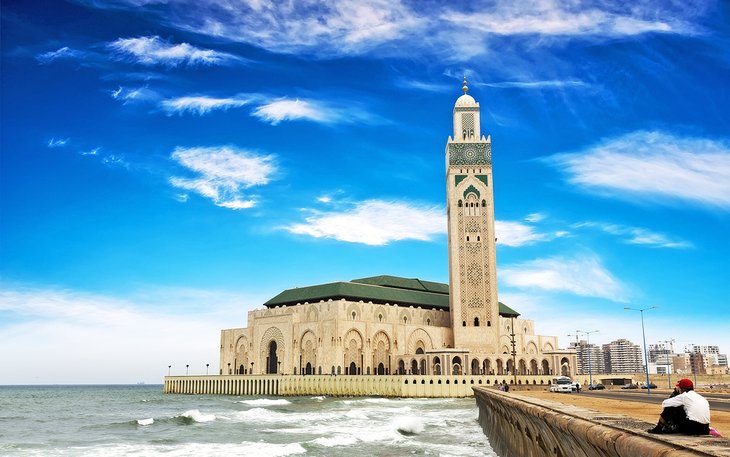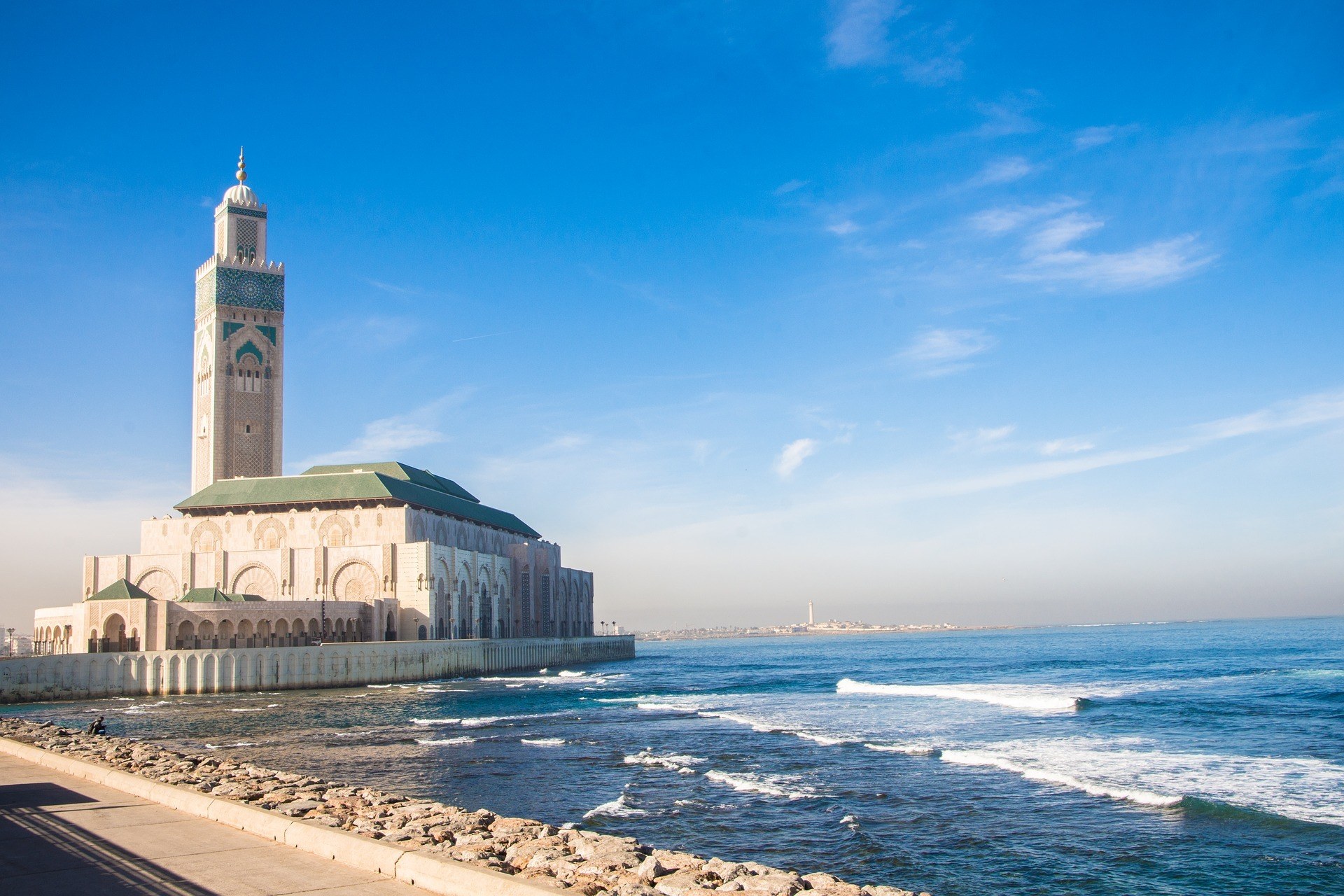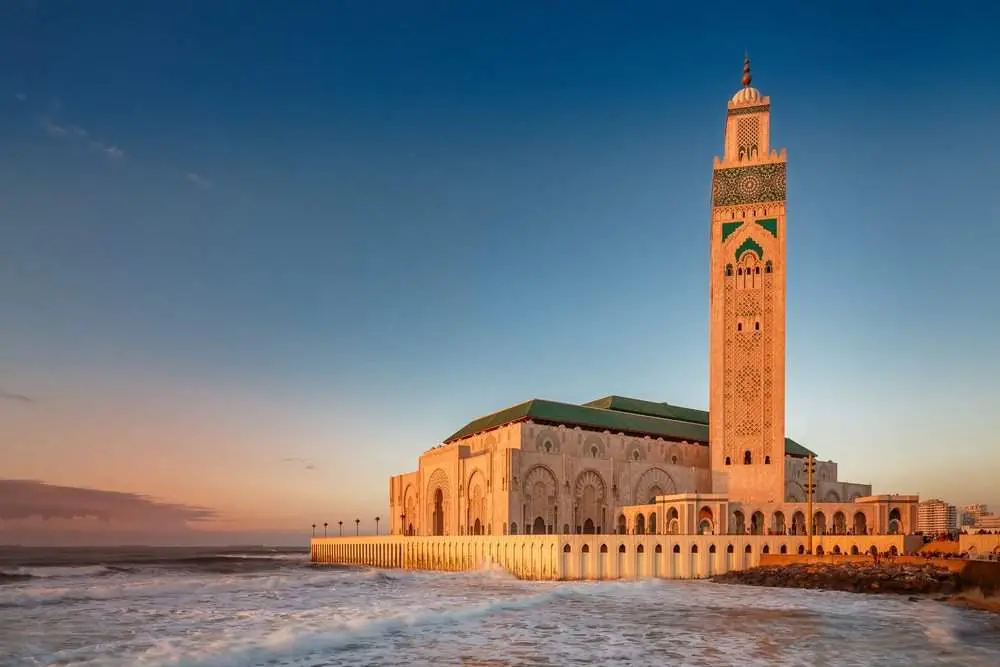
Casablanca, a name synonymous with romance and intrigue thanks to the iconic 1942 film, is far more than just a cinematic legend. It’s Morocco’s largest city, a bustling commercial hub, and a fascinating blend of traditional Moroccan culture and modern cosmopolitan influences. While the film might be its most famous export, Casablanca offers a wealth of attractions, experiences, and cultural encounters that deserve exploration. This guide delves into the city’s top attractions, historical context, practical travel tips, accommodation options, transportation, and the best time to plan your visit.
Unveiling Casablanca’s Top Attractions:
Casablanca offers a diverse tapestry of sights, from stunning religious architecture to bustling marketplaces and tranquil seaside escapes. Here are some of its must-see attractions:

Related Articles about Casablanca: Beyond the Silver Screen – A Guide to Morocco’s Modern Metropolis:
- Phuket: The Pearl of the Andaman – A Comprehensive Guide to its Best Hotels, Attractions, and Travel Essentials
- Penang: The Pearl of the Orient – A Journey Through Heritage, Flavours, and Natural Wonders
- Surabaya: A Vibrant Metropolis Where History Meets Modernity
- Lisbon: The Luminous City of Seven Hills – A Comprehensive Travel Guide
- Cairo’s Crown Jewels: A Guide to the City’s Best Hotels and Unforgettable Experiences
-
Hassan II Mosque: Arguably the most impressive landmark in Casablanca, the Hassan II Mosque is a masterpiece of Islamic architecture. Completed in 1993, it’s the largest mosque in Morocco and the 13th largest in the world. Its minaret, soaring to a height of 210 meters, is the tallest religious structure globally. What truly sets it apart is its location perched dramatically on the Atlantic coastline, with a section of the floor capable of being retracted to reveal the ocean below. Non-Muslims can take guided tours (available in multiple languages) to admire the intricate tilework, carved stucco, and exquisite craftsmanship that adorn every surface. The sheer scale and artistry of the mosque are breathtaking.
-
Rick’s Café: For fans of the classic film, a visit to Rick’s Café is a pilgrimage. While not the actual location used in the movie (which was filmed in a Hollywood studio), this painstakingly recreated establishment evokes the atmosphere of the fictional bar. Expect a piano player serenading guests with familiar tunes, a menu featuring dishes inspired by the film, and a chance to immerse yourself in the romantic ambiance of Casablanca. It’s a popular spot, so reservations are highly recommended, especially for dinner.
-
Corniche Ain Diab: The Corniche Ain Diab is Casablanca’s vibrant beachfront promenade, stretching along the Atlantic coast. It’s a perfect place for a stroll, offering stunning ocean views, a refreshing sea breeze, and a lively atmosphere. Lined with restaurants, cafes, hotels, and nightclubs, the Corniche is a popular destination for both locals and tourists. You can rent a bicycle, enjoy a meal with a sea view, or simply relax on the beach and soak up the sun. In the evenings, the Corniche comes alive with music and entertainment.

-
Quartier Habous (New Medina): Designed in the 1930s by the French to alleviate overcrowding in the old Medina, the Quartier Habous, or New Medina, offers a more structured and less chaotic medina experience. It retains the traditional architecture with narrow alleyways, souks (markets), and artisan workshops, but with a more organized layout. Here you can find traditional Moroccan crafts, spices, leather goods, and souvenirs. Don’t miss the Mahkama du Pacha, a stunning administrative building showcasing exquisite Moroccan craftsmanship.
-
Cathédrale Sacré-Cœur: A striking example of Art Deco architecture, the Cathédrale Sacré-Cœur is a former Roman Catholic church that now serves as a cultural center. Its unique design, blending European and Moroccan influences, makes it a visually appealing landmark. Although no longer used for religious services, the cathedral is open to the public and hosts exhibitions, concerts, and other cultural events. Climb to the top of one of the towers for panoramic views of the city.
-
Museum of Moroccan Judaism: This unique museum offers a glimpse into the rich history and culture of the Jewish community in Morocco. It showcases artifacts, photographs, and historical documents that tell the story of Jewish life in the country. It is the only museum dedicated to Judaism in the Arab world.
-
Parc de la Ligue Arabe: Casablanca’s largest public park, the Parc de la Ligue Arabe, offers a tranquil escape from the city’s hustle and bustle. With its wide promenades, lush greenery, fountains, and palm trees, it’s a perfect place for a relaxing walk or a picnic. The park also features a small amusement park for children.
A Glimpse into Casablanca’s History:
Casablanca’s history stretches back centuries, long before its cinematic fame. Originally a Berber settlement, it was later inhabited by the Phoenicians, Romans, and Arabs. In the 15th century, the Portuguese destroyed the town, rebuilding it and renaming it Casa Branca (White House). The city changed hands several times before falling under French protectorate in 1912. During the French colonial period, Casablanca underwent significant development, becoming a major port and commercial center. It played a crucial role during World War II, hosting the Casablanca Conference in 1943, where Allied leaders Franklin D. Roosevelt and Winston Churchill met to discuss war strategy. Following Morocco’s independence in 1956, Casablanca continued to grow, solidifying its position as the country’s economic powerhouse.
Travel Tips for a Smooth Visit:
- Language: Arabic is the official language, but French is widely spoken, especially in business and tourism. English is also spoken in tourist areas.
- Currency: The Moroccan Dirham (MAD). Credit cards are accepted in larger establishments, but it’s always good to have cash on hand for smaller shops and markets.
- Dress Code: While Casablanca is a relatively modern city, it’s important to dress respectfully, especially when visiting religious sites. Avoid overly revealing clothing.
- Bargaining: Bargaining is customary in the souks and markets. Be prepared to negotiate prices, but always do so respectfully.
- Safety: Casablanca is generally safe for tourists, but it’s always wise to be aware of your surroundings and take precautions against petty theft, especially in crowded areas.
- Water: Drink bottled water to avoid any stomach issues.
- Ramadan: If you’re visiting during Ramadan, be aware that many restaurants and shops may have limited hours. Eating and drinking in public during daylight hours is also generally avoided out of respect for those who are fasting.
Accommodation Options: From Riads to Modern Hotels:
Casablanca offers a wide range of accommodation options to suit all budgets and preferences.
- Luxury Hotels: For a luxurious experience, consider staying at one of the city’s upscale hotels, such as the Four Seasons Hotel Casablanca, the Hyatt Regency Casablanca, or the Sofitel Casablanca Tour Blanche. These hotels offer world-class amenities, stunning views, and impeccable service.
- Mid-Range Hotels: There are also many excellent mid-range hotels in Casablanca, offering comfortable accommodations at a more affordable price. Look into the Barceló Casablanca, the Kenzi Basma, or the Hotel Le Doge.
- Riads: For a more traditional Moroccan experience, consider staying in a riad, a traditional Moroccan house with an interior courtyard. Riads offer a unique and intimate atmosphere, often with personalized service.
- Budget Hotels and Hostels: For budget-conscious travelers, there are plenty of budget hotels and hostels in Casablanca, offering basic but clean accommodations.
Getting Around Casablanca: Transportation Options:
Casablanca offers various transportation options to navigate the city:
- Taxis: Taxis are readily available and a convenient way to get around. There are two types: "petits taxis" (small taxis) which operate within the city and "grands taxis" (large taxis) which travel between cities. Petit taxis are metered, but it’s always a good idea to confirm the price before you start your journey.
- Tramway: Casablanca’s modern tramway system provides an efficient and affordable way to travel within the city. It connects major areas, including the city center, the Corniche, and the Hassan II Mosque.
- Buses: The bus network is extensive but can be crowded and confusing for visitors.
- Train: Casablanca has several train stations, connecting the city to other major destinations in Morocco, such as Marrakech, Rabat, and Fes.
- Car Rental: Renting a car can be a good option if you plan to explore the surrounding areas, but driving in Casablanca can be challenging due to traffic congestion.
The Best Time to Visit Casablanca:
The best time to visit Casablanca is during the spring (April-May) or fall (September-October). The weather during these months is mild and pleasant, with sunny days and comfortable temperatures. The summer months (June-August) can be hot and crowded, while the winter months (November-March) can be cool and rainy. Consider your preferences for weather and crowd levels when planning your trip.
Beyond the Tourist Trail:
While the main attractions are certainly worth visiting, consider venturing beyond the well-trodden tourist paths to discover the authentic soul of Casablanca.
- Explore the Marché Central: This bustling central market is a feast for the senses, offering a vibrant array of fresh produce, spices, seafood, and local crafts.
- Visit the Villa des Arts: This art gallery showcases contemporary Moroccan art and hosts regular exhibitions.
- Attend a traditional Moroccan cooking class: Learn how to prepare classic Moroccan dishes and experience the flavors of Moroccan cuisine.
- Simply wander through the streets: Lose yourself in the labyrinthine alleyways of the Medina, observing daily life and soaking up the atmosphere.
Casablanca is a city of contrasts, where the echoes of the past meet the dynamism of the present. It’s a place where you can marvel at architectural masterpieces, haggle for treasures in bustling markets, relax on sun-kissed beaches, and experience the warmth and hospitality of the Moroccan people. While the romance of "Casablanca" may have put it on the map, the city itself offers a far richer and more compelling story waiting to be discovered. So, pack your bags, embrace the adventure, and prepare to be captivated by the vibrant charm of Morocco’s modern metropolis.





